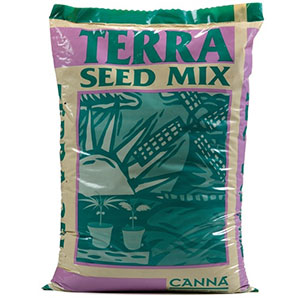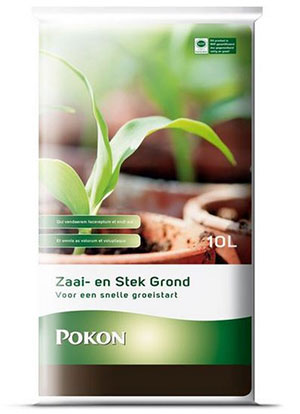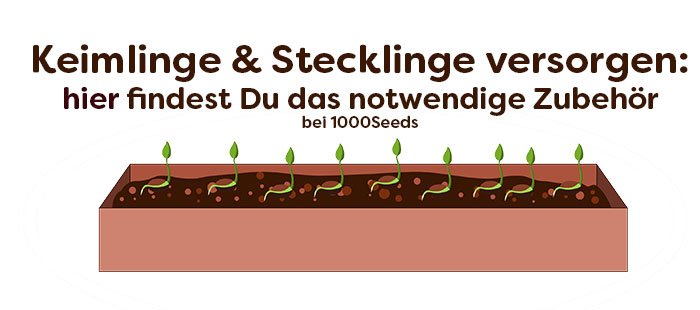Identifying and solving problems with seedlings and young cannabis plants
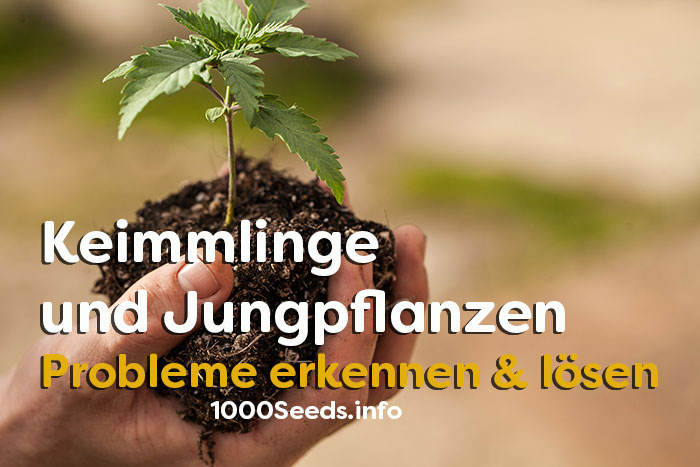
Especially in the early stages, seedlings and young cannabis plants are still sensitive and react more strongly to stress and poor growing conditions. Some mistakes that are often made, contribute to the fact that the plants develop poorly and especially grow beginners sometimes despair. But this does not have to be. In the following article you will learn how to avoid typical mistakes and how to recognize problems at an early stage.
Up front, a healthy cannabis seedling looks like this:
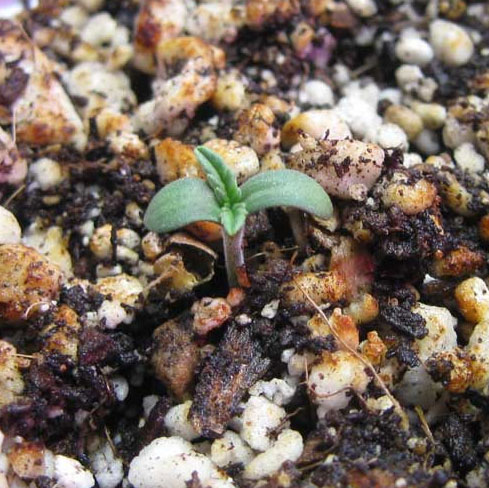
When cannabis seedlings see the light of day, they initially have 2 round cotyledons. These leaves are already developed inside the seed and unfold as soon as the seed germinates. After the cotyledons have unfolded, the actual and typical cannabis leaves start to grow. As they age, cannabis leaves look more and more like what we know them to be. Healthy seedlings, become healthy and vigorous young cannabis plants.
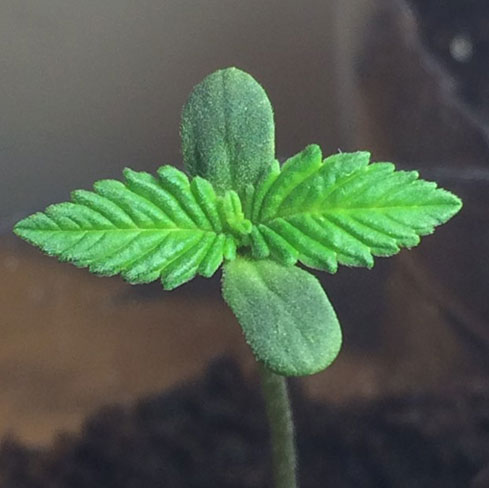
The most common mistakes and problems with seedlings
Overwatering
The symptoms of overwatering can be: the seedlings are weak and hang around, the planting medium is very wet, the seedling simply topples over as if someone had cut it off.
Overwatering of seedlings is very often triggered by the following factors:
- The pot is too small
- Too big pot, very small plant
- There is not enough drainage in the planter, watering water can not drain properly
- Watering is too often
The main problem with overwatering is that the roots then no longer get enough oxygen, so they literally drown. Too much water in the planter displaces the oxygen in the root area, which is vital for the roots and the plants. This lack of oxygen is often noticeable by drooping limp leaves.
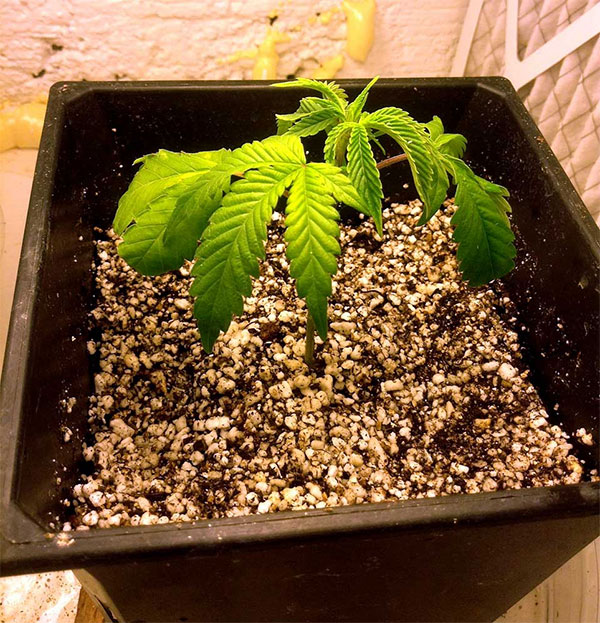
One of the most common causes of overwatering is a plant pot that is too large. In pots that are too large, you can quickly overwater seedlings and young cannabis plants because the roots cannot yet absorb as much water as the pot has stored. Large pots take a long time to dry out. This is also the reason why those plants that were previously in a smaller pot grow faster than plants that were already placed in a large pot from the beginning.
That is why it is best to plant seedlings in a small pot first until they have grown strong and gained some size. Then they can be transferred to the next larger pot. Cannabis plants should always be planted in a container that is appropriate for their size and age.
Seedlings need only a very small pot (of about 0.25L). Plants that are placed in a pot too large, not only unnecessarily waste growing space and planting medium, but also generally grow more slowly. If it is already too late and you have already used a pot that is too large, water only carefully and little in a ring around the young plant. It can be watered normally once the young cannabis plants have become vigorous.
Pot too small
Just as using a planter that is too large can cause problems, problems can occur if a pot that is too small is used. As seedlings, the small cannabis plants like small pots, but when they grow larger and stronger, the roots need more space. If the seedlings are not repotted in time, "rootbound" can occur and the roots will begin to wrap around themselves. Symptoms of overwatering and nutrient deficiency may then appear as a consequence.
Too small a pot in combination with overwatering can lead to strange symptoms that often look like nutrient deficiency: brownish leaves, discoloration of the leaves, rusty spots and dots...
If the cannabis plant is not happy with its environment and planting medium, it will not be able to absorb many nutrients, this in turn will lead to certain symptoms that look like a nutrient deficiency.
As long as the top layer of soil is still wet and moist, you should not water again. At the latest when algae forms in the pot and the top layer of soil, you know you've been overwatering for quite a long time. Overwatering can also lead to an additional major problem: namely, fungus. Fungal diseases can spread quickly in a medium that is too moist and kill the plants.
No adequate drainage in the planter
A lack of drainage in the planter, often leads to problems. Here's how you can easily solve them:
Always start with a good planting medium that is suitable for cannabis plants and has good drainage on its own. Use branded soil such as Plagron, BioBizz, CANNA, etc. for this.
Use a small pot in the beginning, so you minimize the risk of overwatering and the seedlings can develop better.
The planter should have enough holes at the bottom so that excess water can quickly escape.
As long as the water consumption of the small plants is still low, water only a little and not too often.
Textile pots such as the Smart Pot provide aeration to the root zone from the sides as well.
Never leave young plants (and adult plants) in water.
In the dreaded "falling sickness plants simply bend at the stem. This means the certain death of the plant, because it can then no longer live. This often happens when poor, not well drained or wrong soil is used. Also, if too much pre-fertilized soil is used, fall over disease can occur.
Falling sickness
At the same time the roots should not be allowed to dry out. They need constant access to moisture. The best for roots is when they have constant access to moisture and oxygen. If it is rather cold you also need to water less often. The frequency of watering should be adjusted individually according to the actual consumption of the plant depending on the temperature.
Too little water
Seedlings and young plants get drooping leaves, start to wilt and grow poorly if they are not watered sufficiently. Similar to overwatering, too little water can lead to bigger problems. If the planting medium is rock hard and dry, then the plant is suffering from a severe lack of water.
Make sure the cannabis roots have access to moisture at all times. Plants are constantly losing water through the leaves and new water is being transported into the plant by the roots. This is like a kind of perpetual suction.
This is a cannabis plant that is too dried out
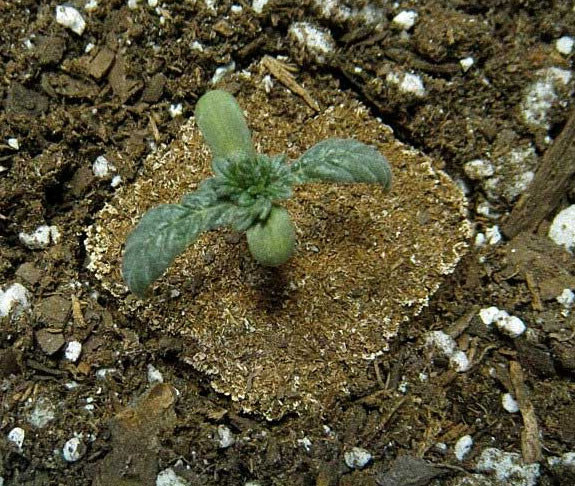
When the roots of plants dry out, they increasingly cease to function. If parts of the root dry out completely, they die at the same time. Especially seedlings suffer greatly if they do not get enough water. If the soil begins to separate from the edge of the pot, this is a sign of desiccation. The problems worsen if heavily pre-fertilized soil or many nutrients were given at the same time. The small cannabis plants grow little and develop poorly. The solution to the problem is simple: give more water. As soon as the young plants receive enough water again, they start to grow and recover normally.
Problems with nutrients
Healthy cannabis plants have lush green leaves. If the leaves are yellowish, discolored, dried out or have spots, something is wrong. If the leaves of the plants change, you should react and take countermeasures.
Common problems with seedlings related to nutrients, are:
- Too much nutrients
- None, too little nutrients
In hot and dry environments, overfertilization occurs particularly easily. Two clear indications of overfertilization are dark green (green-black) leaves and dried leaf tips.
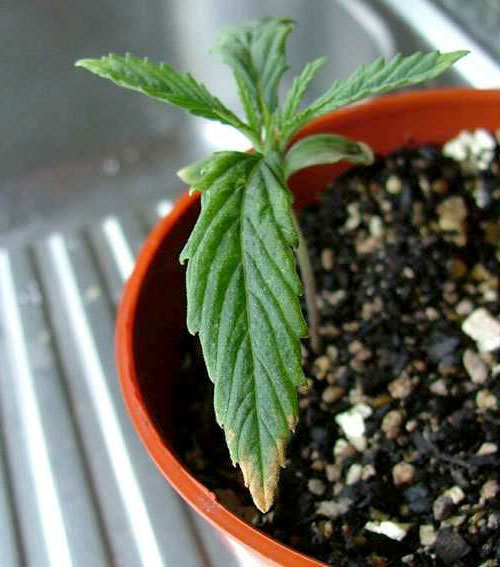
Very dark leaves are often a sign of too much nitrogen.
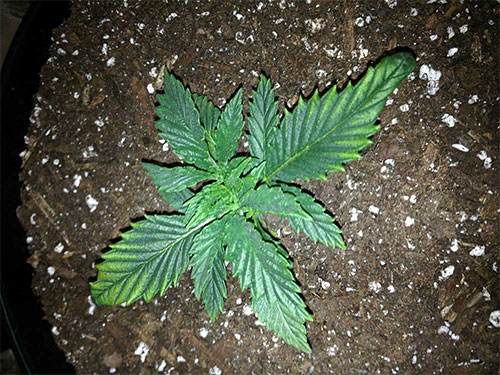
If the excess nitrogen continues, the leaves will begin to turn yellow and further nutrient problems will occur. Excess nitrogen can occur in seedlings and young plants if started with a heavily pre-fertilized soil, if nutrients are given too early or if too many nutrients are given. In a good soil for seedlings, e.g. Light Mix from BioBizz, it is not necessary to fertilize in the first weeks. The soil already contains all the necessary nutrients.
If too many nutrients are given at once, the plant can quickly become "poisoned". If the cannabis plants receive too many nutrients, it can in turn lead to a nutrient deficiency of certain nutrients, because some are then blocked. If you notice an over-fertilization, it is best to first water with clear water, so that the plants have the opportunity to consume the excess nutrients from the substrate before new nutrients are added. Usually the plants recover quickly and regain their fresh green color.
Nutrient problems and deficiency symptoms in seedlings and young plants usually only occur when the wrong soil is used. Nutrient deficiency in seedlings can occur in soilless planting media that do not contain any nutrients. For example, when seeding in rockwool blocks, coco or vermiculite. All necessary nutrients must be given in these media from the beginning and in the correct dosage, otherwise nutrient deficiency will soon occur.
In the context should always be given the right fertilizer for each phase. A bloom fertilizer during flowering and a growth fertilizer in the growth phase. If both are mixed up or not dosed correctly, deficiency symptoms or even overdosing will occur. If the cannabis plants grow larger, they need an appropriate pot. If this is too small, the nutrient problems accumulate.
Heat
Heat can affect seedlings and young cannabis plants: the leaf tips curl, the leaves are wilted, possibly spots appear.
Cannabis plants and heat
If the heat in the grow room is too great, appropriate measures should be taken: better, stronger ventilation, air conditioning of the grow room, improved insulation, etc.
Lack of light
Seedlings that suffer from a lack of light become long, spidery and weak. If the plants do not get enough light, they stretch out and may even bend. In addition, they can not develop properly and remain lean. The problem is easily solved: provide more light. Bring the grow light closer to the plants or get the seedlings out of their dark corner in the garden. When the little ones suffering from light deficiency are provided with more light, they start to develop normally again and in time their spidery appearance disappears.
Too much light
If the seedlings and young plants are placed too close to the grow light or in full sun, they may get burned. Simply increase the distance to the lamp and accustom seedlings to the sun for a few days before exposing them to direct sunlight.
Too cool temperatures
Seedlings and young plants want especially warm temperatures (26-27°C). If it is too cold, seeds may not germinate and seedlings may grow slowly or not at all.
Humidity too high
If you use a small greenhouse for germination or seedlings, it is important to ventilate it several times (5x-10x) a day for a few minutes and leave the ventilation flaps open. Too high humidity during germination and for seedlings can cause fall over disease. A Hygrothermometer helps to control and keep the parameters.
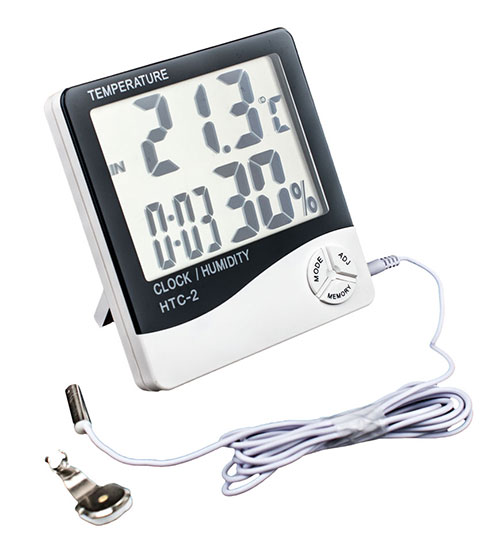
So these were the most important tips at a glance, I hope they will help you a little if you have ever had problems in this matter.
See you soon
Your Juan






